Abstract
Trends in smoking associated respiratory diseases in England and Wales during 1941-85 have been studied, with careful attention to problems caused by changes in classification of cause of death. Three diseases were selected for analysis: lung cancer, emphysema, and chronic obstructive lung disease. During 1971-85 deaths that would previously have been certified under chronic bronchitis have increasingly tended to be classified under chronic airways obstruction. The definition of chronic obstructive lung disease that was used includes both terms to avoid the artificial decline caused by consideration of chronic bronchitis in isolation. Age specific rates for all three diseases show a pronounced cohort (period of birth) pattern, rates for men rising up to the rates for those born shortly after the turn of the century and then declining, and rates for women peaking in the cohort born 20-25 years later. For chronic obstructive lung disease, but not for lung cancer and emphysema, the cohort peak is superimposed on a sharply declining downward trend. In both sexes cohort patterns of cumulative cigarette consumption peak at a time broadly similar to those seen for the three diseases. Trends in cigarette consumption, however, cannot explain the underlying steeply declining rate of chronic obstructive lung disease. Nor can they fully explain the declining trends in lung cancer and emphysema rates in younger men and women.
Full text
PDF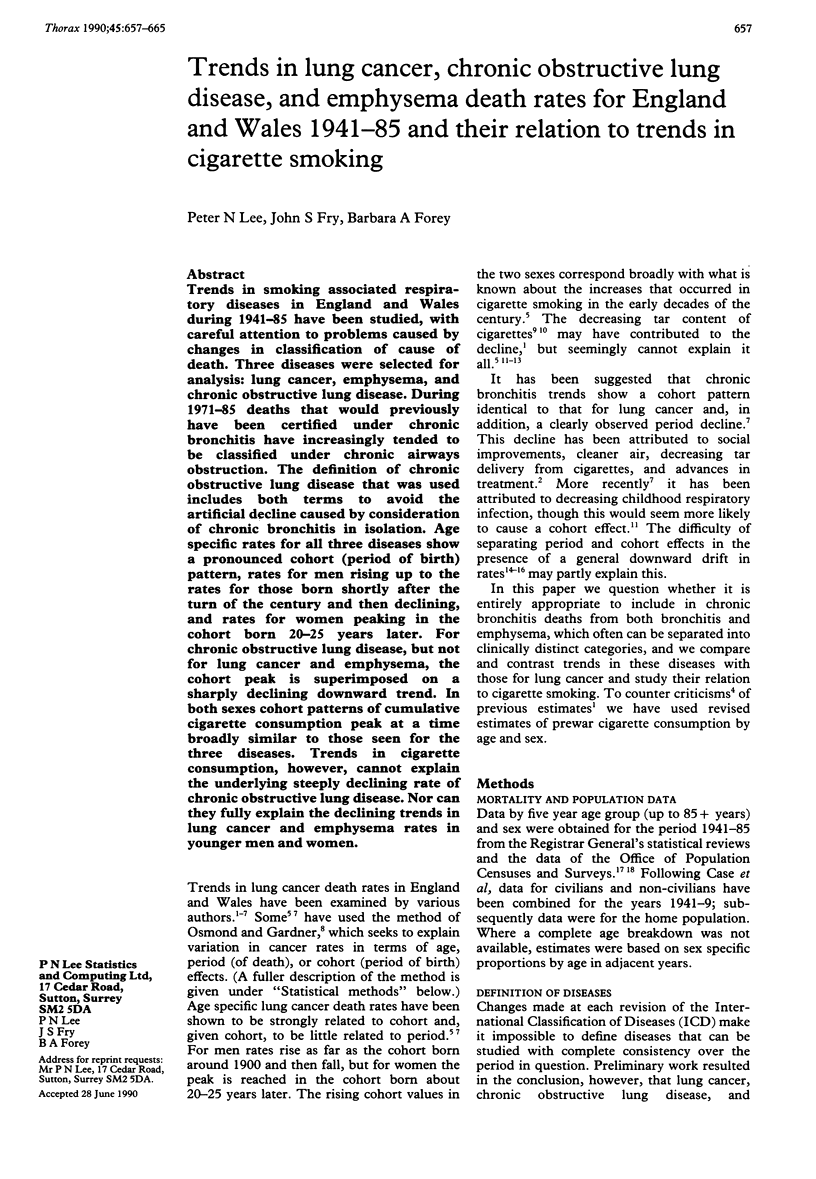
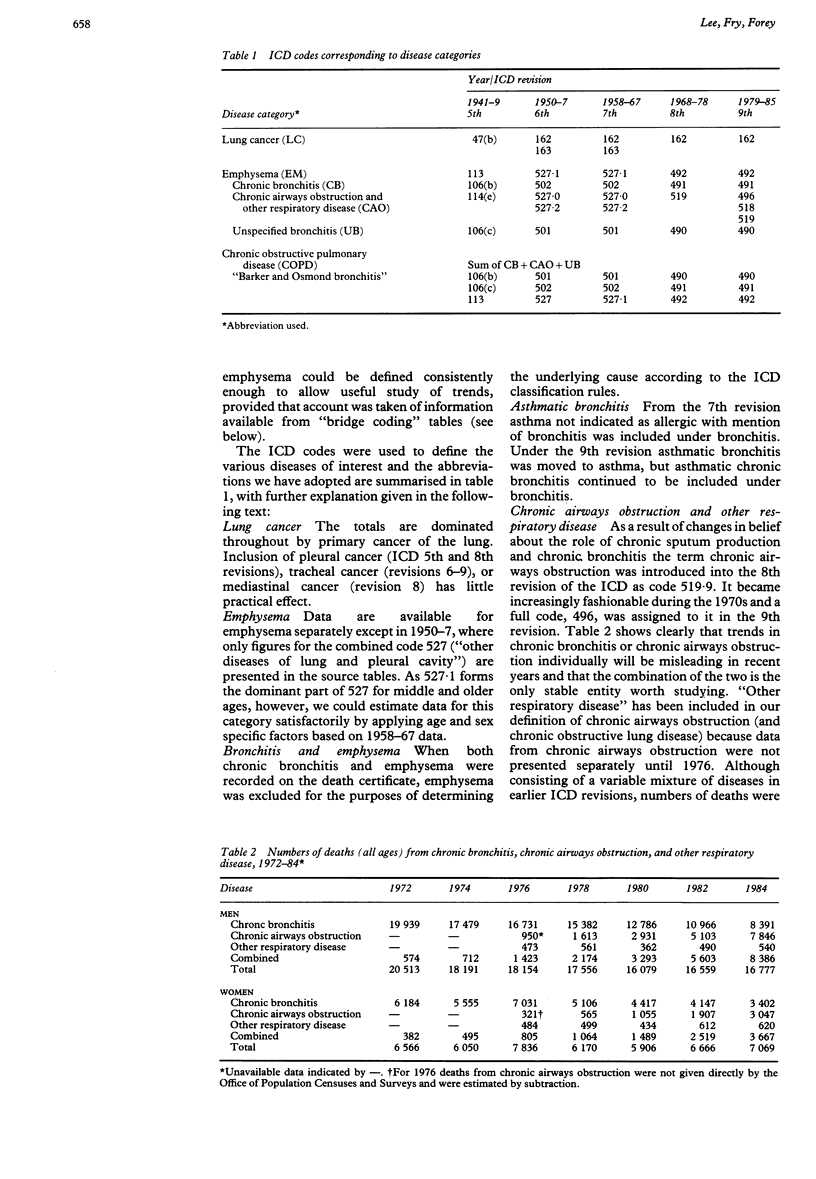
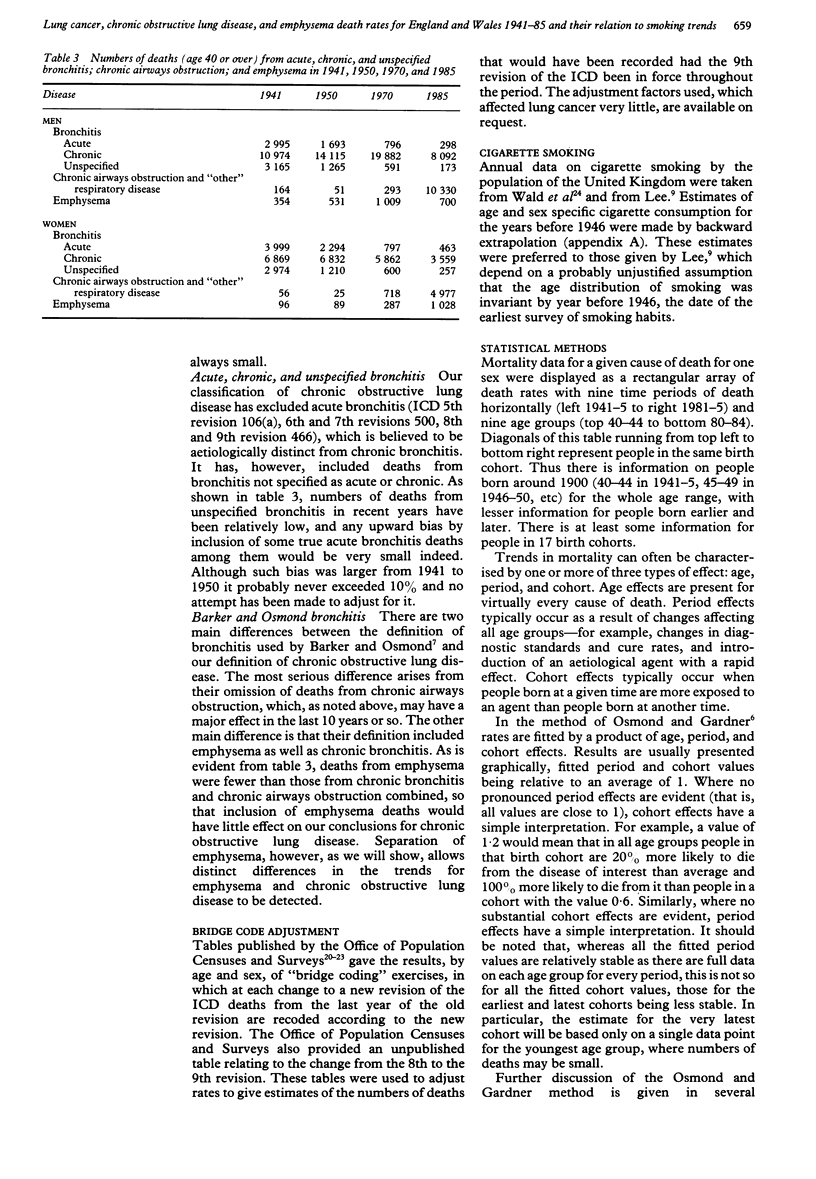
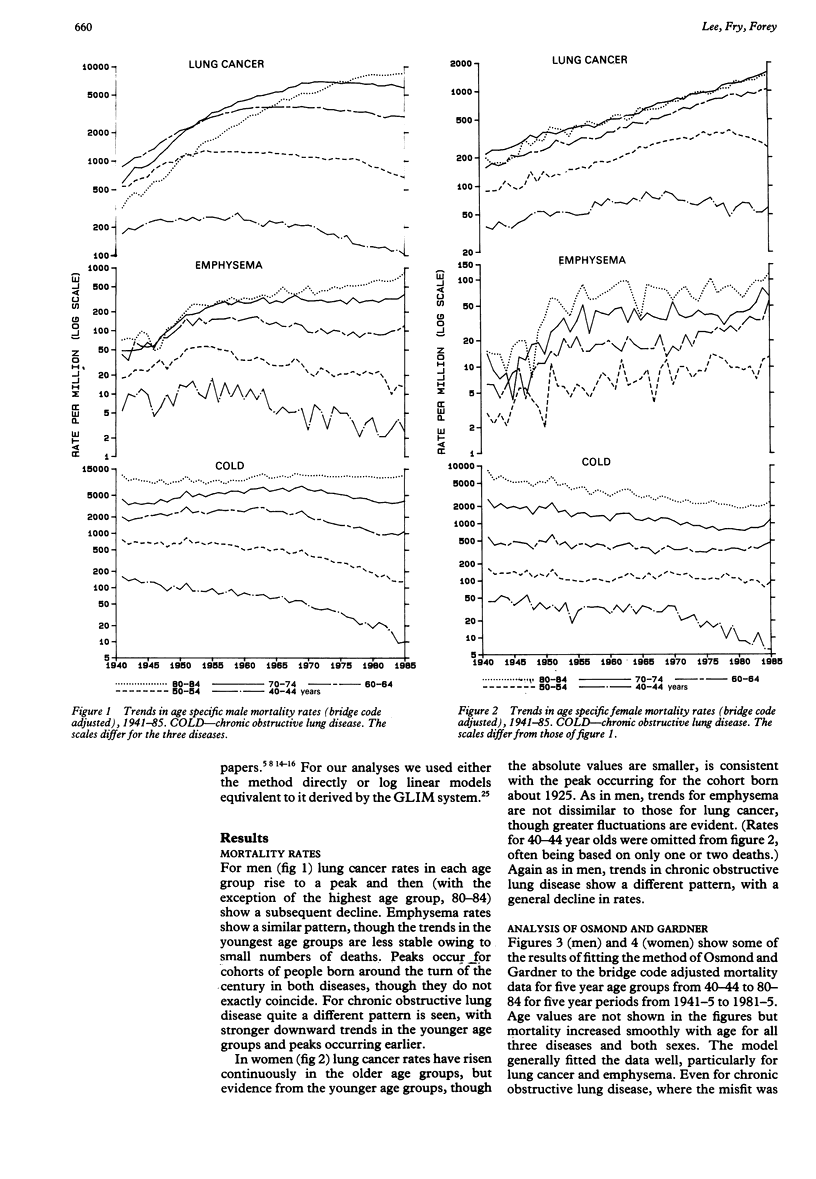
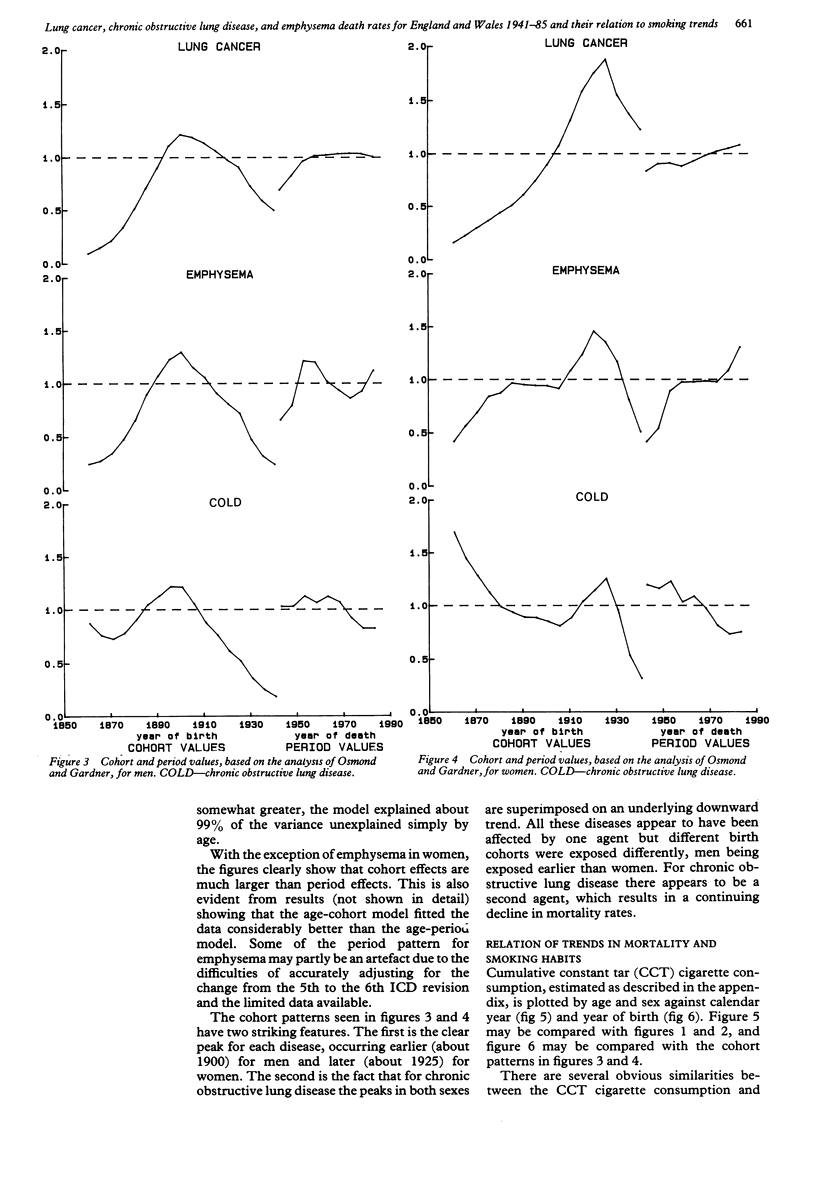
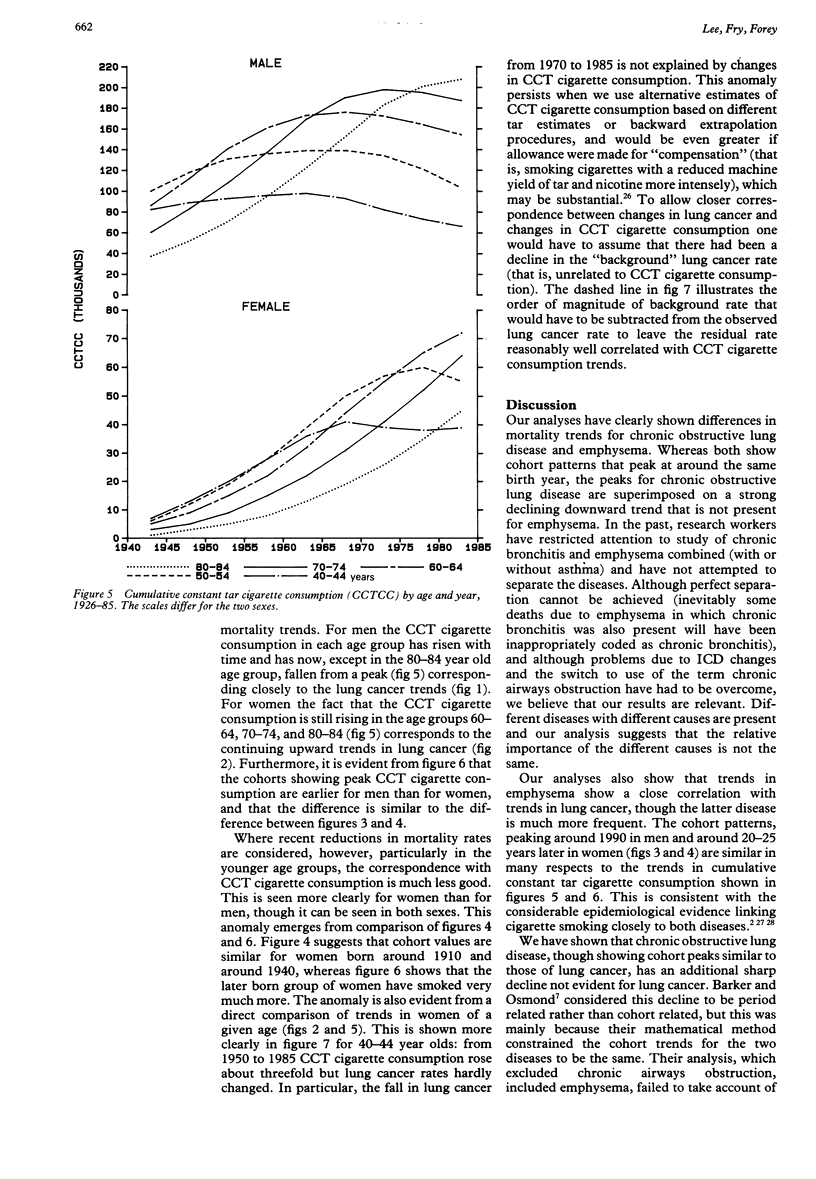
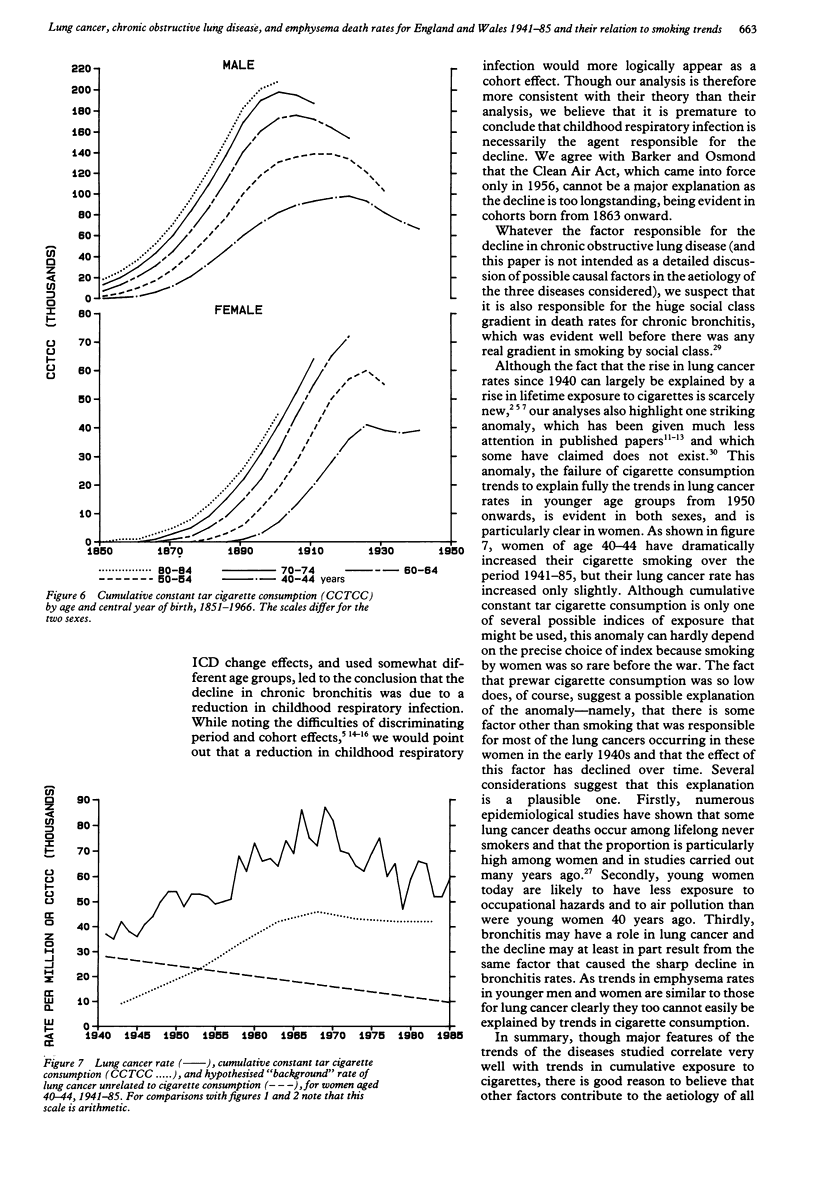
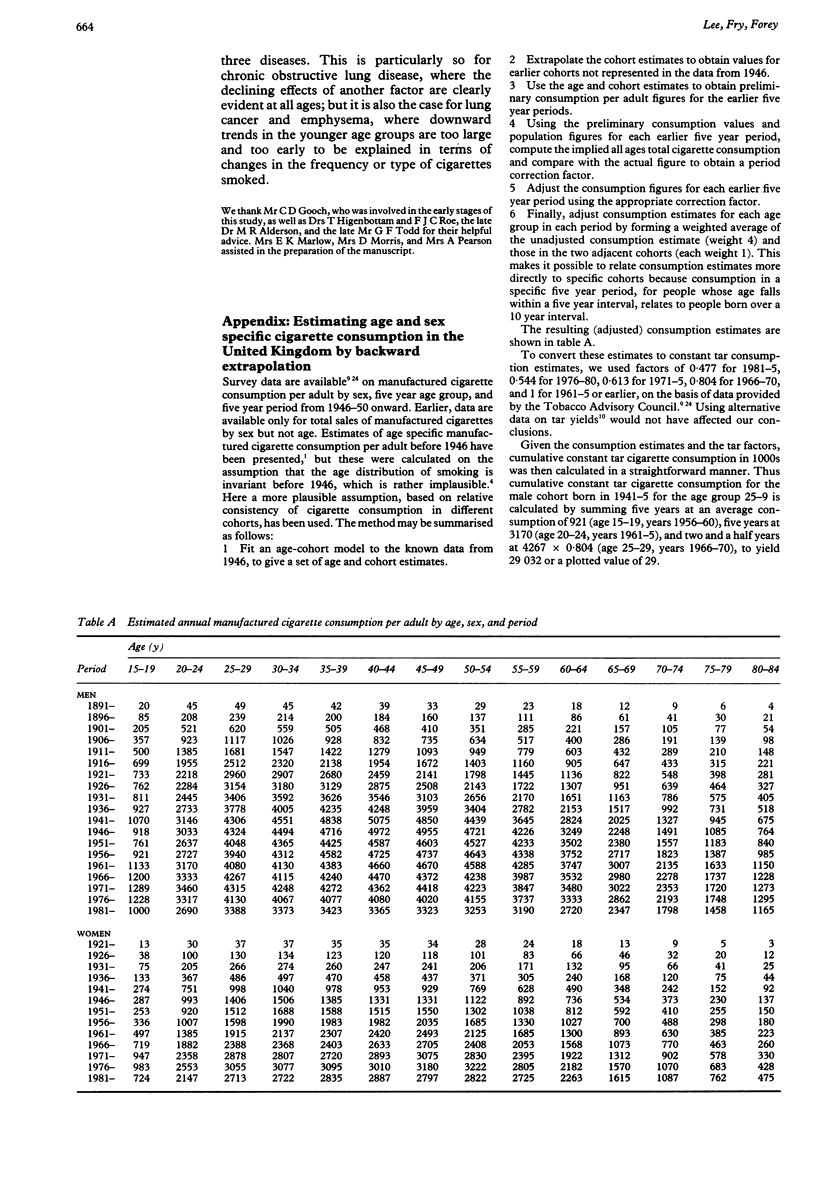
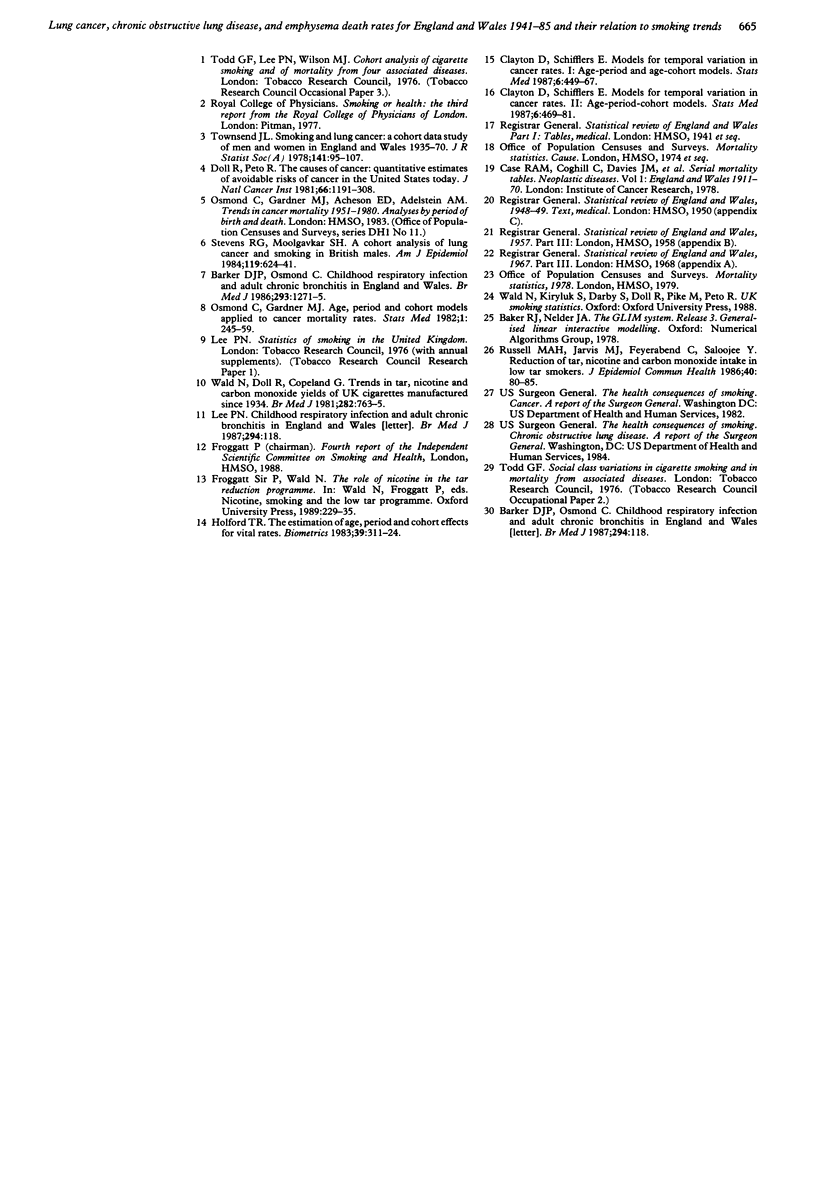
Selected References
These references are in PubMed. This may not be the complete list of references from this article.
- Barker D. J., Osmond C. Childhood respiratory infection and adult chronic bronchitis in England and Wales. Br Med J (Clin Res Ed) 1986 Nov 15;293(6557):1271–1275. doi: 10.1136/bmj.293.6557.1271. [DOI] [PMC free article] [PubMed] [Google Scholar]
- Clayton D., Schifflers E. Models for temporal variation in cancer rates. I: Age-period and age-cohort models. Stat Med. 1987 Jun;6(4):449–467. doi: 10.1002/sim.4780060405. [DOI] [PubMed] [Google Scholar]
- Clayton D., Schifflers E. Models for temporal variation in cancer rates. II: Age-period-cohort models. Stat Med. 1987 Jun;6(4):469–481. doi: 10.1002/sim.4780060406. [DOI] [PubMed] [Google Scholar]
- Costa A., Bonadonna G., Villa E., Valagussa P., Silvestrini R. Labeling index as a prognostic marker in non-Hodgkin's lymphomas. J Natl Cancer Inst. 1981 Jan;66(1):1–5. [PubMed] [Google Scholar]
- Osmond C., Gardner M. J. Age, period and cohort models applied to cancer mortality rates. Stat Med. 1982 Jul-Sep;1(3):245–259. doi: 10.1002/sim.4780010306. [DOI] [PubMed] [Google Scholar]
- Russell M. A., Jarvis M. J., Feyerabend C., Saloojee Y. Reduction of tar, nicotine and carbon monoxide intake in low tar smokers. J Epidemiol Community Health. 1986 Mar;40(1):80–85. doi: 10.1136/jech.40.1.80. [DOI] [PMC free article] [PubMed] [Google Scholar]
- Seller M. J. Unanswered questions on neural tube defects. Br Med J (Clin Res Ed) 1987 Jan 3;294(6563):1–2. doi: 10.1136/bmj.294.6563.1. [DOI] [PMC free article] [PubMed] [Google Scholar]
- Stevens R. G., Moolgavkar S. H. A cohort analysis of lung cancer and smoking in British males. Am J Epidemiol. 1984 Apr;119(4):624–641. doi: 10.1093/oxfordjournals.aje.a113779. [DOI] [PubMed] [Google Scholar]
- Wald N., Doll R., Copeland G. Trends in tar, nicotine, and carbon monoxide yields of UK cigarettes manufactured since 1934. Br Med J (Clin Res Ed) 1981 Mar 7;282(6266):763–765. doi: 10.1136/bmj.282.6266.763. [DOI] [PMC free article] [PubMed] [Google Scholar]


